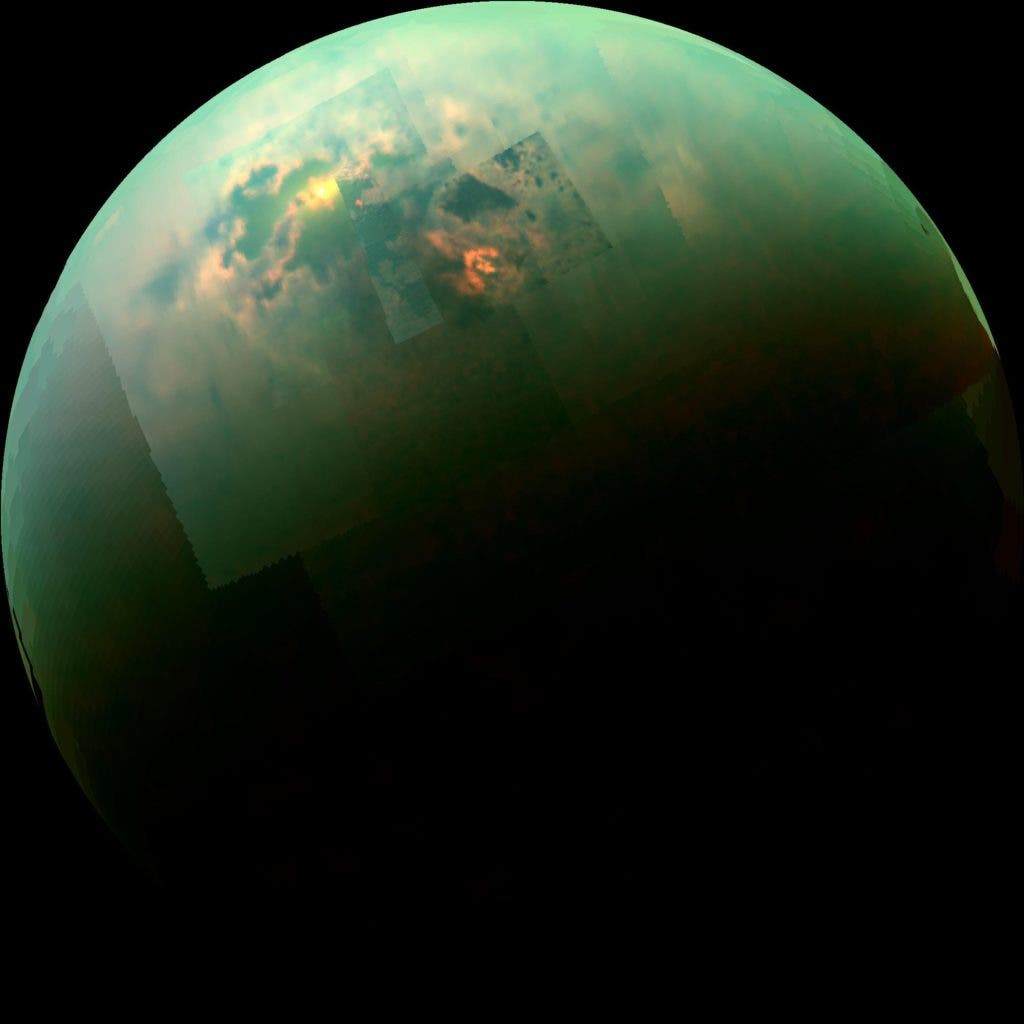Astronomers have made a puzzling observation which could have big implications for our understanding of Titan.

Surprisingly, Titan is a lot like Earth. Even though it’s a moon of Saturn and even though it’s much colder, it shares many similarities to our planet. It’s the only place in the solar system where stable liquid sits on the surface – although it’s not water but seas of liquid methane. The geology of the satellite, with its grand canyons and numerous valleys also seems to showcase an active planet which might even host life. Now, we can add another similarity to Earth: clouds.
According to a study in Geophysical Research Letters, a seemingly impossible cloud on Titan may be created by familiar weather processes. The cloud they witnessed is made of a compound of carbon and nitrogen known as dicyanoacetylene (C4N2). The process for cloud formation was thought to be pretty straightforward: it generally involves condensation.
Here on Earth, we’re familiar with the water cycle. Water evaporates, forms clouds, then falls down on the ground through precipitation. It seemed that the same thing is happening on Titan but again, with methane instead of water. But when it comes to the vapor form of this chemical, Titan’s stratosphere, where the cloud should form, is as dry as a desert. Needless to say, this came as a surprise.
“The appearance of this ice cloud goes against everything we know about the way clouds form on Titan,” said Carrie Anderson, a CIRS co-investigator at NASA’s Goddard Space Flight Center in Greenbelt, Maryland, and lead author of the study.
It’s not the first time this phenomenon was spotted. Decades ago, the infrared instrument on NASA’s Voyager 1 spacecraft spotted an ice cloud just like this one on Titan. That one, just like this one, had too little dicyanoacetylene – just one percent of the gas needed for the cloud to condense. Now, we know from Earth that some clouds don’t need condensation to form – through a kind of “solid-state” chemistry based on the interactions of ice particles. These clouds are bad news, according to Rachel Feltman from the Washington Post.
“Chlorine-based chemicals enter the air by way of pollution on the ground, then meet up with icy water crystals in the dry stratosphere. The chemical reactions that occur in these wispy clouds release chlorine molecules, which eat away at the ozone layer.”
But Earth and Titan’s chemistries vary greatly, so that’s still really surprising.
“The compositions of the polar stratospheres of Titan and Earth could not differ more,” said Michael Flasar, CIRS principal investigator at Goddard. It is amazing to see how well the underlying physics of both atmospheres has led to analogous cloud chemistry.


